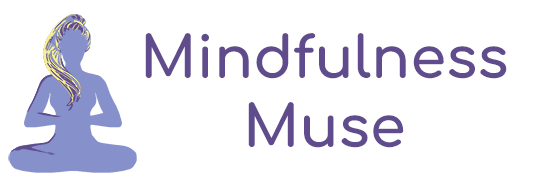Mindfulness vs. Mindlessness

“Rejoice in the things that are present; all else is beyond thee.” – Montaigne
We are mindful when we are in a “mental state characterized by nonjudgmental awareness of the present moment experience, including sensations, thoughts, bodily states, consciousness, and the environment, while encouraging openness, curiosity, and acceptance” (Hofmann et al., 2010, p. 169). This state of mindfulness is flexible, open to novelty, and sensitive to both context and perspective (Langer, 2005).
When we are operating in life from a mindful position, we are willing to open ourselves to all of the possibilities and nuances of our internal and external worlds. We feel willing to invite whatever thoughts and emotions may come, because we are not rigid in fear that thoughts or emotions will overwhelm us. Through this open stance, we allow ourselves to bear witness to thoughts, emotions, and external events without judgment. Paradoxically, when we allow potentially negative thoughts or feelings to simply “be,” we take away the power that they have over us. It is when we resist and deny our thoughts and feelings that they grow stronger.
A mindful stance welcomes whatever thoughts and emotions arise, examines them with curiosity and openness, and then lets them go. There is no need to hold on to the disturbing thoughts and emotions. From a mindful place, we are willing to experience them, calm in the knowledge that we are in the driver’s seat. Thoughts and emotions have no power over us when in a mindful place. When we experience fear, anger, or sadness mindfully, we take away the power of those emotions. We do not deny or invalidate them, but we see them for what they truly are: feelings.
When we choose to adopt a mindful view towards our daily experience, we release the need to evaluate every thought, feeling, or action as “good” or “bad.” Ellen Langer, author of the chapter “Well-Being” in the Handbook of Positive Psychology, notes that while “evaluation is central to the way we make sense of our world, in most cases, evaluation is mindless … A more mindful approach would entail understanding not only that there are advantages and disadvantages to anything we may consider but that each disadvantage is simultaneously an advantage from a different perspective (and vice versa). With this type of mindful approach, virtually every unpleasant aspect of our lives could change.”
Much of what we are taught in Western societies involves the idea that when bad things happen, we just need to “hold on” and wait for them to pass. Imagine the tension and fear involved in this mindset – knuckles white, breath held in, muscles tight. When we shift into a mindful stance, we can begin to view the bad things that happen in life as being context dependent. There is a deep awareness that with everything, there are both good and bad aspects, depending on our point of view.
When we are operating in a mindless way, we are choosing not to take in all available information – we select that which we pay attention to, even when it only increases fear or anger. When living in mindlessness, we go through the day reacting to internal thoughts and feelings and external events, rather than responding. Mindlessness results in unawareness – we are limiting the full range of what we can experience. There is understandable fear involved in the idea of “inviting” seemingly negative thoughts or emotions with open-minded curiosity. We are taught to reject and suppress such negativity.
Reflect on how your own experience changes when you practice mindfulness in your daily routine. The next time that an unpleasant thought or feeling arises, rather than stuffing it down and rejecting it, allow it to be. Practice sitting with discomfort. When we learn how to tolerate discomfort and distress in this way, we are providing ourselves with the chance to be freed from suffering. Our emotional suffering persists when we deny it, ignore it, or rage against it. Notice it, welcome it, observe it, and let it go.
– – – – – – – – – – – – – – – – – – – – – – – – – – – – – – – – – – – – – – – – – – – – – – – – – – – – – – – – – – – – – – – – –
Hofmann, S.G., Sawyer, A.T., Witt, A.A., & Oh, D. (2010). The effect of mindfulness-based therapy on anxiety and depression: A meta-analytic review. Journal of Consulting & Clinical Psychology, 78(2), 169-183.
Snyder, C.R. & S.J. Lopez. (2005). Handbook of Positive Psychology. New York, NY: Oxford University Press.
Featured image: welcome new light by AlicePopkorn / CC BY 2.0

what a deep reflection…..great post. makes me think of being in a state of mind similar to being in the “matrix.” That is, a state of mind that embraces all without judgment. not good or bad. just is. bad could be good, good could be bad. it is trust and belief in the universe.
david
David – I’m so glad that you enjoyed this post on mindfulness vs. mindlessness. It can be so difficult to truly embrace all without judgment – “radical acceptance.” It seems that often times our thinking about events attaches a “good” or “bad” label that doesn’t necessarily reflect reality. Mindfulness can provide a liberating perspective in many ways. Thanks for the comment & for visiting my blog!
I really enjoyed the article. I learnt a lot. Can you please tell me how emotional Intelligence, mindfulness and mindlessness techniques impact self-efficacy?